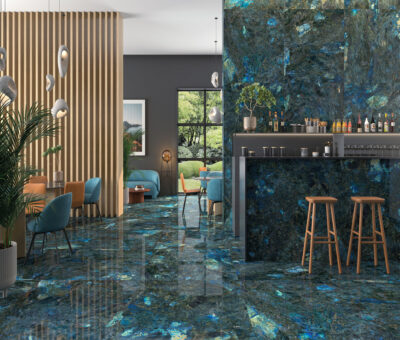Saint-Gobain Weber: Below The Surface of Concrete Floor Renovations
For most homeowners who have initiated renovations, spending money and time installing floors don’t always cause much excitement. But fitting a flooring system properly at the outset can lead to a better more comfortable space for your family in the long term. And the good news is that it needn’t break the bank.
Many homes already have concrete slabs installed beneath existing floor coverings. So how can you make the most of what already exists, while ensuring a quality and long-lasting renovation?
The secret is simple – it’s all in the preparation. Key to any floor installation is preparing the layers which lie beneath the visible surface and the process involves effectively cleaning, priming and screeding a concrete or cement-based slab before covering it with your chosen material.
Here’s all you need to know before embarking on a floor renovation, from the team at Saint-Gobain Weber.
Create a smooth and flat surface
A good quality product that’s properly applied can positively impact on the lifespan and performance of the finished floor. It will also minimise wear-and-tear on your overlay covering, while enhancing the tactile, thermal and acoustic comfort value of your floor.
While most people focus on the visible floor cover, the key to a creating and long lasting floor lies in this unseen layer, so give it sufficient time and attention and use a high quality smoothing compound or screed. It’s imperative to ensure the floor face is perfectly smooth and level. Create an underlayment – a strong but smooth layer of material between the sub floor and its covering – using a self-levelling screed or smoothing compound which is a type of mortar comprising a combination of high quality cement, sand, fillers, binders and polymers. A self-levelling screed material differs from concrete both in function correcting unevenness and forming a resilient smooth texture that compliments the floor covering installation requirement for installation.
There are numerous quality screed options available on the market, some of which are specially designed for certain spaces. To guarantee achieving the consistently flat surface which is so integral to the success of your flooring project, select a self-levelling screed. This is a great solution in general and especially so if your base is slightly out of level or has rough uneven patches. A good option is Pro Self-Levelling Screed WB270 which is also pumpable, rapid-setting and fast-drying, making it ideal for home renovations.
7Clean and prime
Once set and dry, sweep and vacuum the underlayment, ensuring that the substrate is thoroughly clean so that when you prime, the product soaks into the floor as opposed to a layer of dirt and dust. Then prime it with a mixture of cement-based primer and a bonding agent to strengthen and waterproof the surface while creating a mechanical and chemical bond for adhesives before covering.
Sealing and covering
Finally, finish your floor with a covering that best suits your family’s needs, be it a lush carpet, laminate planks, vinyl, real wood or a more modern ceramic tile finish.
Whether installing floors as a DIY project or making use of a professional contractor, always make sure that the hidden underlayment layer is correctly installed to make the most of your floor covering. Your home’s inhabitants, be they humans or pets, will benefit from a more comfortable tactile experience and better installation against sound and temperature, and your beautiful new floors will last longer.
Contact: Saint-Gobain Weber
You might also like...
-
Embrace Love in Every Hue with Stiles.

As Valentine’s Day approaches, love is in the air, and what better way to celebrate than by infusing your living spaces with warmth, intimacy, and ...
-
Discover the beauty of natural wood with Castro Wood Floors

A classic design choice, the ongoing demand for biophilic spaces that embrace natural – and sustainable – materials has once again shone a spotlight on ...
-
Making a Statement: Tile Trends Redefining Design in 2024.

The design landscape of 2024 is marked by a striking trend that takes tile and flooring to the forefront of interior aesthetics – the era ...




























